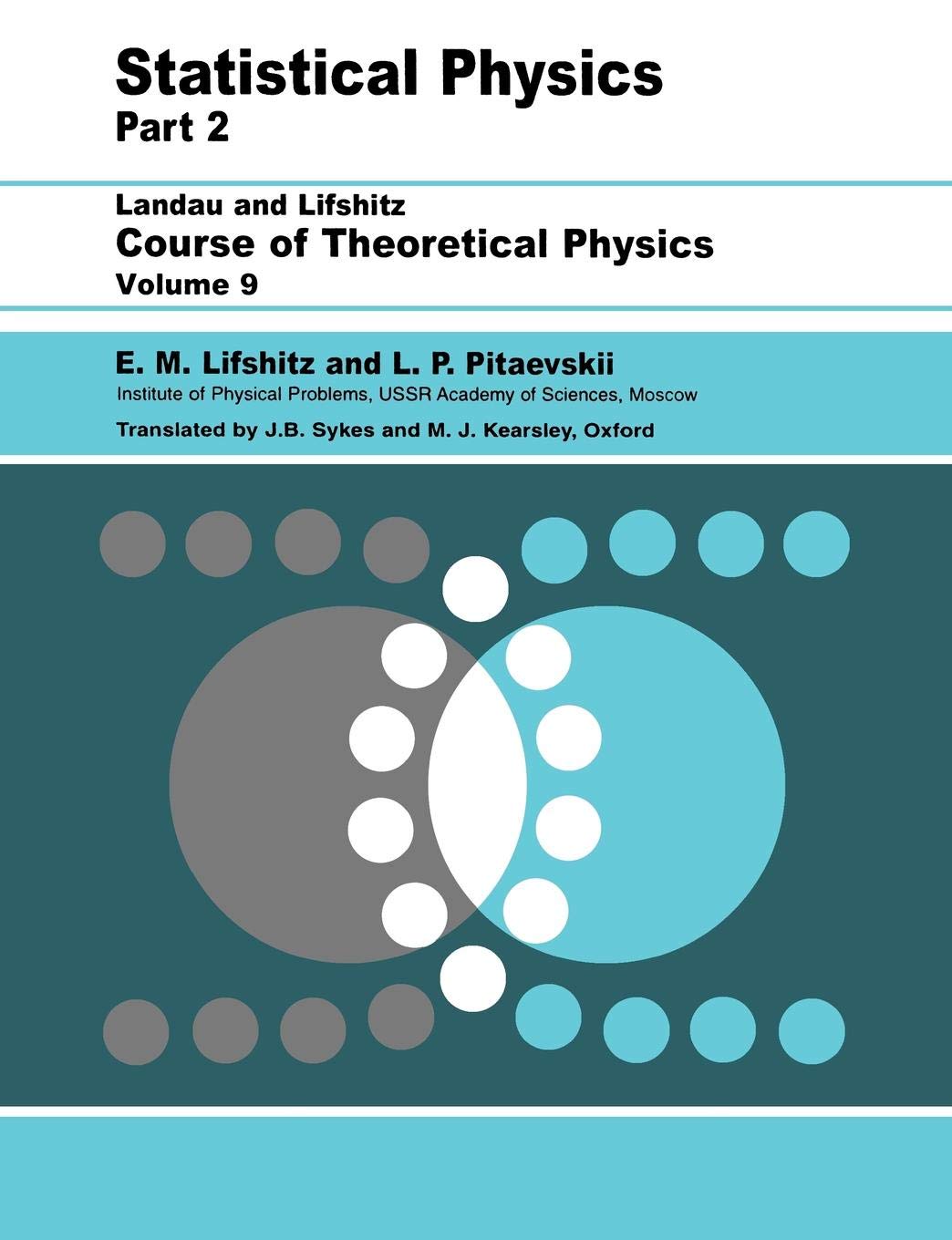Statistical Physics part 2 - quantum theory (Book)
Quantum statistical physics is fundamental in the description of superfluid Helium, metals and ordinary conductivity, superconductivity, and other quantum phenomena of matter. One of the initiators of the field was Landau himself, many famous models are named after him. Carrying this on, Philip Anderson coined the name "condensed matter physics" and developed the technique of symmetry breaking and Anderson localization. Anderson's symmetry breaking and the resulting Goldstone-Bosons originated here, despite the fame of the Higgs mechanism in the Electroweak theory that explains how many fundamental particles appear to gain mass.
| Statistical Physics Part 2 | |

| |
| Information | |
|---|---|
| Author | Lev Landau |
| Language | English |
| Series | Course of Theoretical Physics |
| Publisher | Butterworth-Heinemann |
| Publication Date | 1980 |
| Pages | 387 |
| ISBN-13 | 978-0-75-062636-1 |
As such, it has already shown to be an important proving grounds both experimentally and theoretically for methods in quantum field theory, and this continues to be the case. Modern problems focus on the engineering of artificial atoms (Quantum Dots), the theory of superconductivity for high critical temperatures (this is not explained by the usual low Tc theory), the Integer and Fractional Quantum Hall Effects; From those come emergent gauge fields, Chern-Simons theory, Topological Quantum Computing, Anyons, the Twisted-Equivariant cohomology classification of topological phases (Kitaev, Freed), and applications of AdS/CFT. Condensed matter, due to this and the immense wealth produced by the development of semiconductors and modern computing devices, is the largest and most active area of physics today.
For resources, Heidelberg University has a Condensed Matter group which focuses on engineering quantum systems: kondo effect in quantum dots, synthetic quantum systems. An exceptional master's student thesis on twisted equivariant cohomology and the 10-fold way/K-theory classification is here. Otherwise, Freed's and Kitaev's ideas will be encountered in their full form in the books here or their papers. Note that Dan Freed works in the developed language of cohomology theories in algebraic topology, changing between geometric methods like those in Spin Geometry and gauge theory, or simplicial methods/spectra from formal algebraic topology. Additionally, David Tong's page contains many online condensed matter/quantum hall effect lecture notes and external resources. It is worth emphasizing that the foundation of these effects/phases is the crystal lattice structure of metals (basic theory, Bloch functions, in Landau). It is a mathematical reinterpretation of this situation that gives us point symmetry groups acting on the Brillouin torus, bundles and band structures over the torus.
For the following books, Anderson gives speculation as to the actual theory of high Tc, and some philosophy and misgivings about the direction of the field. He has valuable insight. Sachdev helps run a condensed matter group at Harvard, these books by him cover the basic ideas of the quantum hall effect and these further applications to topological field theory, while remaining grounded in the application. His ideas are based on holography (AdS/CFT) and D-brane technology from string theorists. It did not fit here, but a good general reference for D-branes is Clifford Johnson's book The later books are much more mathematical, and follow from the previous topics. A text on random matrices in physics is provided before the foray into the matrix model and Chern-Simons gauge theory (notably featuring Parisi, Marino, Di Francesco). It is consistent with our previous philosophy that mathematical and specifically statistical ideas are best seen through the lens of physics/statistical mechanics and geometry.
We end on another more physics-text discussing the appearance of gauge and other field theories in condensed matter, because it explains some recent progress. Finally, a text on the Integer and Fractional Quantum Hall effects featuring many legendary and some Nobel-prize winning condensed matter physicists and the promised text on quantum information theory applications of tensor geometry by Landsberg.
Applications
The Theory of Superconductivity in the High Tc-Cuprates
The Theory of Superconductivity in the High Tc-Cuprates by Philip Anderson.
Holographic Quantum Matter
Holographic Quantum Matter by Sean Hartnoll, Andrew Lucas, and Subir Sachdev.
Applications of Random Matrices in Physics
Applications of Random Matrices in Physics by Edouard Brezin, Vladimir Kazakov, Didina Serban, Paul Wiegmann, and Anton Zabrodin.
Chern-Simons Theory, Matrix Models, and Topological Strings
Chern-Simons Theory, Matrix Models, and Topological Strings by Marcos Marino.
Field Theories for Low-Dimensional Condensed Matter Systems
Field Theories for Low-Dimensional Condensed Matter Systems by Giuseppe Morandi, Pasquale Sodano, Arturo Tagliacozzo, and Valerio Tognetti.